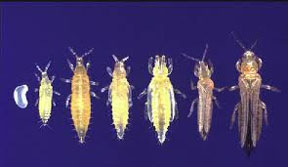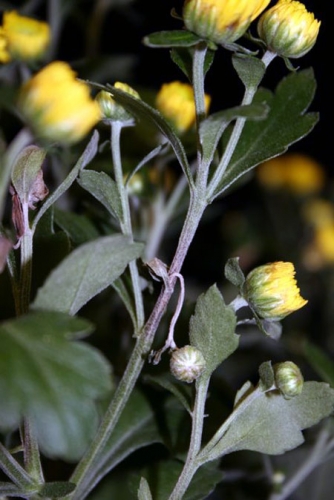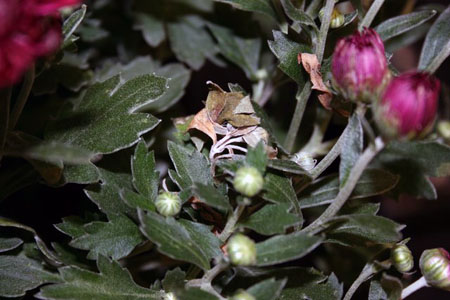Fall garden mums are susceptible to tomato spotted wilt virus
Tomato spotted wilt virus was recently found in greenhouse-grown fall mums. There is no curative chemical treatment once infected, so good management of thrips and proper sanitation practices are imperative for controlling this virus.
Thrips can be a major pest during the summer months to fall garden mums. Growers need to be aware that thrips are the vector for tospoviruses like tomato spotted wilt virus (TSWV), impatiens necrotic spot virus and iris yellow spot virus.
TSWV has one of the largest host ranges of any plant virus, affecting both dicots and monocots. It infects more than 800 plant species with more than 80 plant families. This fall, TSWV was found in a crop of greenhouse-grown fall mums.
Thrips vector the virus
Western flower thrips (Frankliniella occidentalis), onion thrips (Thrips tobaci) and tobacco thrips (Frankliniella fusca) are the three primary species to vector tospoviruses in Michigan. The western flower thrips are the most common pest found in greenhouses during spring production of bedding plants. However, with the heat of the summer, greenhouses utilize passive and active venting that allows the entry of the other thrips species.
|
Thrips are known to have high fecundity (productive reproduction ability) and short reproductive cycles. Western flower thrips can take as little as 10 days to complete a lifecycle. The life stages consist of egg, two larval instars and two pseudo-pupae stages (where the thrips do not feed), and adult. The larval feeding stage acquires the virus while puncturing the plant cells and feeding on the cytoplasm of infected plants.
Western flower thrips has two modes of feeding. They probe for a short duration while they salivate into the plant cells spreading the virus and causing plant damage. Or less often, they puncture the cells and feed for long periods of time. It is documented that the western flower thrips adults can only spread the virus if the virus was acquired while in its larval stage. The virus is stored in the mid-gut and passed through the papal stage into the adult stage.
Tomato spotted wilt virus symptoms
The virus symptoms can be observed on the leaves, stems and flower buds. The leaf tissue may have yellow rings or ring patterns that become necrotic. The stems of infected plants show a grayish canker (Photo 1), causing the stem to collapse and flop over (Photo 2).
Once a plant is infected, there are not any curative chemical treatments. Managing the thrips is imperative along with good sanitation practices. MSU Diagnostic Services can test your plants for TSWV. Visit their website for details on how to submit samples.



 Print
Print Email
Email





